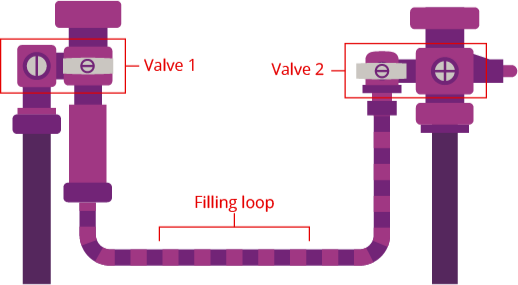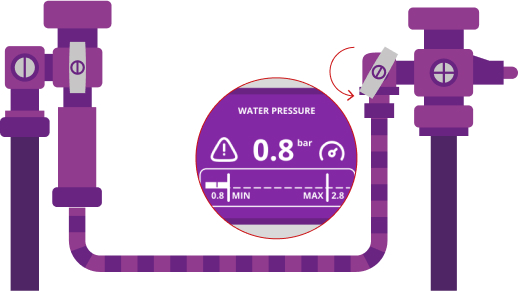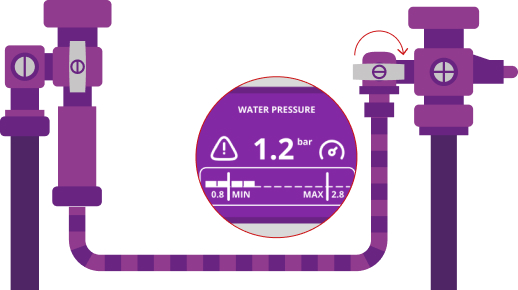Are you facing the frustration of lukewarm water or chilly indoor temperatures, accompanied by the ominous appearance of an F22 fault code on your Vaillant boiler’s display screen? The culprit could very well be low boiler pressure, a common issue that disrupts the comfort of your home. To diagnose this problem, start by examining the display panel of your boiler. There you’ll find either a physical or digital pressure gauge, depending on your boiler’s model. This gauge, indicated by a dial or bar, provides insight into the pressure level within your system, helping you to pinpoint the root cause of your heating woes.

Solutions For Low Pressure On A Vaillant Boiler
If your boiler pressure has been dropping gradually over time, then repressurising the system should fix the problem. We always recommend engaging a professional heating engineer to repressurise a boiler, but if you feel confident and want to try topping up the pressure yourself, these are the steps a heating engineer would take:
How To Repressurise A Vaillant Boiler
Every boiler is unique, so always make sure you check your boiler manual for the exact instructions for your model. The typical steps for repressurising a boiler are:
- Switch off the boiler and let it cool down.
- Locate and inspect the filling loop and pressure gauge.
- Open the filling loop valves to allow water to flow into the boiler.
- Close the valves when the pressure reaches between 1 and 1.5 bar.
- Check for leaks, restart the boiler, and monitor the pressure.
Let’s look at the details:
What Shall I Do If The Boiler Doesn’t Repressurise?
If you have followed all the steps above but your boiler pressure levels drop as soon as you shut the valve, your boiler is likely suffering a major leak or there is a fault with the boiler’s pressure release valve. We don’t recommend trying to resolve these issues yourself, always contact a professional.
It is important to note that you shouldn’t have to repressurise your boiler more than once or twice a year. If it is consistently happening, you’ll need to get it professionally investigated. If you are in our catchment area, please feel free to give our fully qualified team of heating engineers a call on 020 8879 7372 or contact us online at your convenience.





